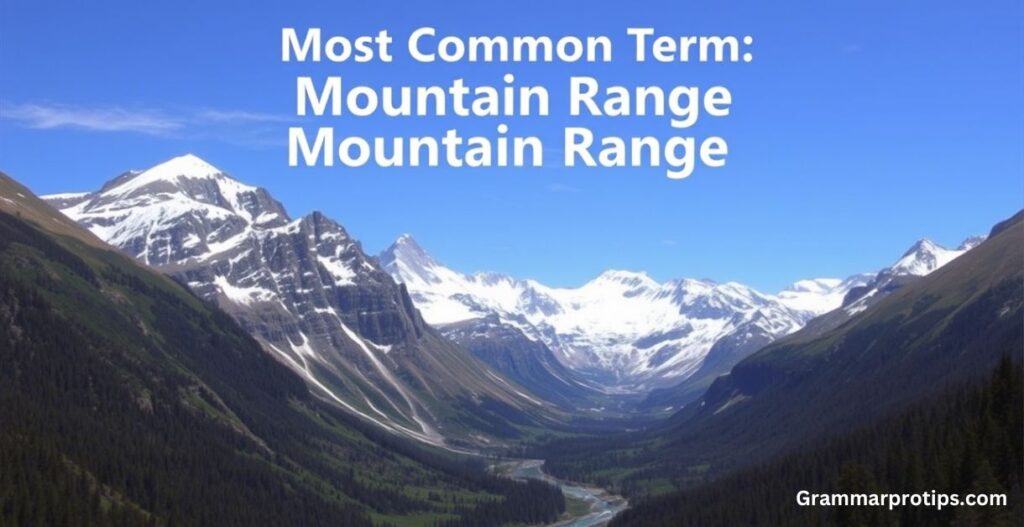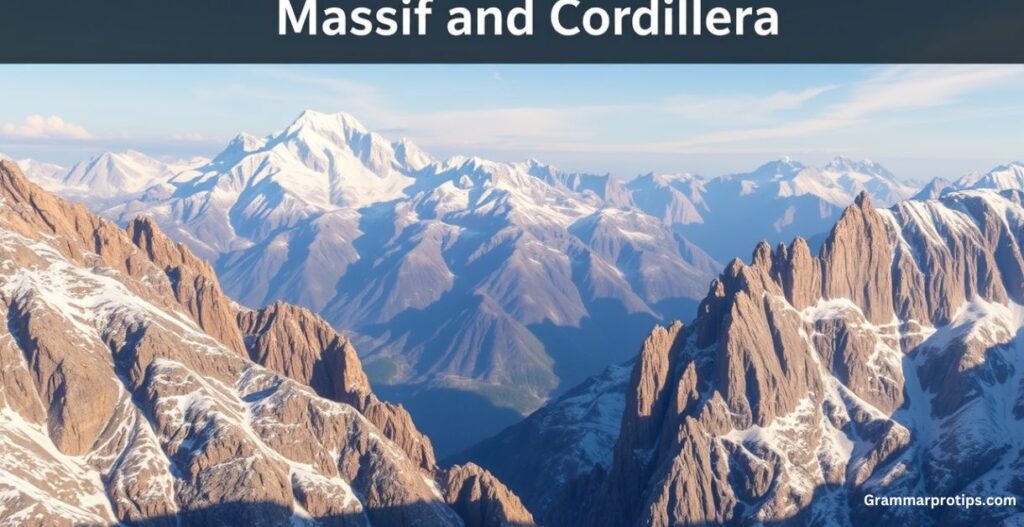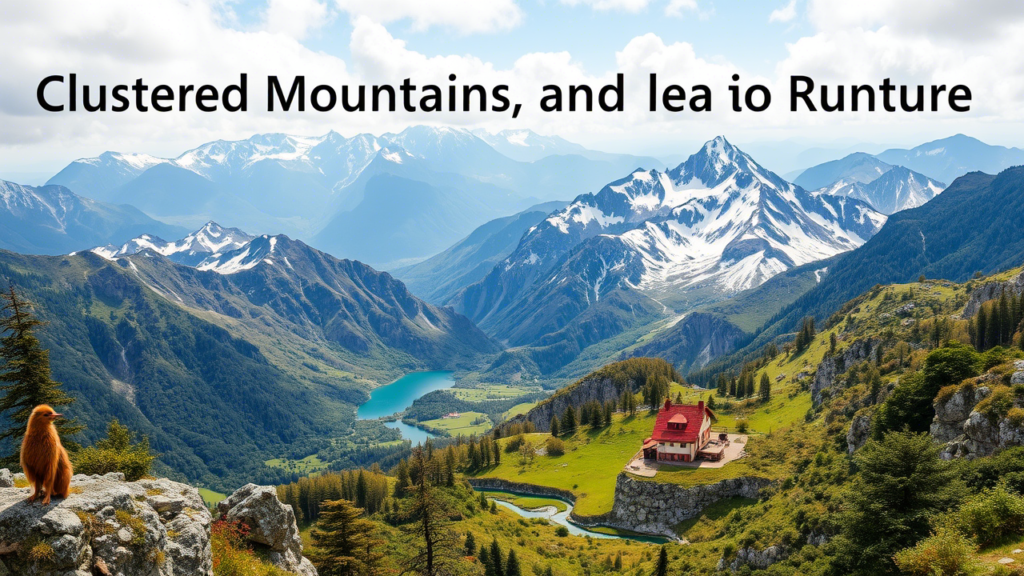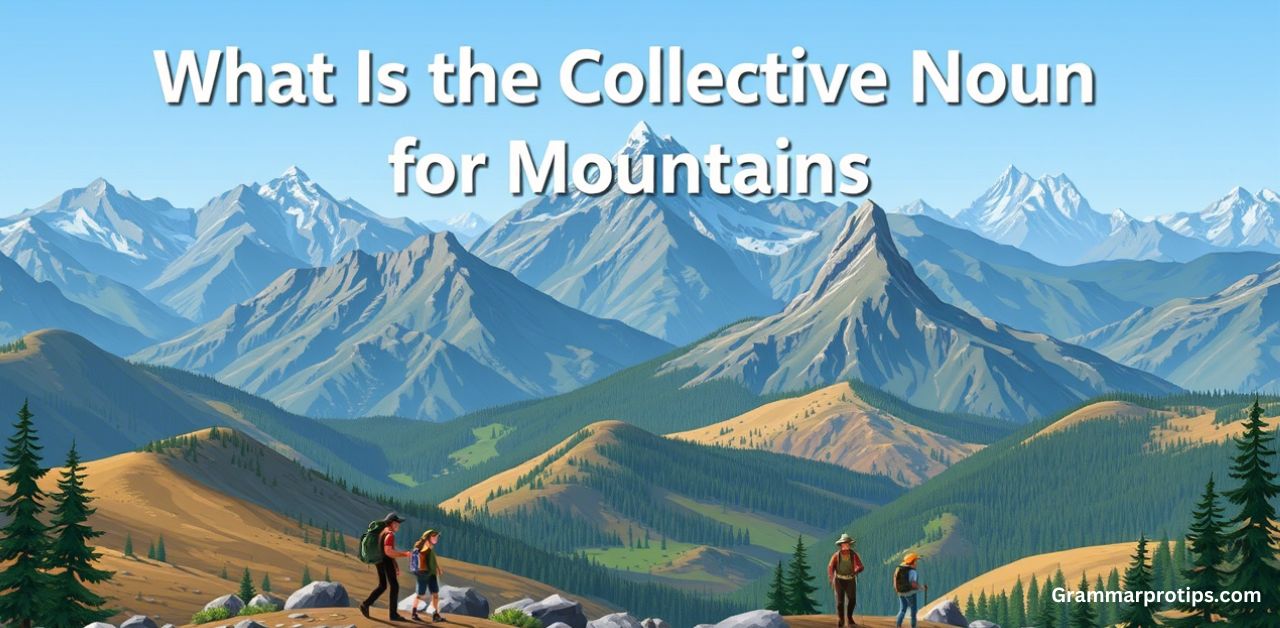When it comes to describing natural landscapes, language often plays a crucial role in shaping how we perceive and understand them. For instance, have you ever wondered what the collective noun of mountain is?
While many people might casually refer to “a group of mountains,” there’s actually more nuance to this terminology than meets the eye. Whether you’re an avid hiker, a geography enthusiast, or just someone curious about words, understanding the mountains collective noun can deepen your appreciation for these towering giants.
Understanding Collective Nouns: A Quick Primer
Before we delve into the specifics of the collective noun for mountains, let’s first clarify what collective nouns are. Simply put, a collective noun refers to a word that describes a group of things taken together as one entity. For example, a flock of birds, a school of fish, or even a gaggle of geese. These terms not only make communication easier but also add richness to our vocabulary.
Now, when it comes to natural landscapes like mountains, finding the right term requires some thought. After all, mountains aren’t just random bumps on Earth—they’re part of intricate systems shaped by millions of years of tectonic activity. This complexity makes choosing the correct collective noun essential for conveying meaning accurately.
The Most Common Term: Mountain Range

One of the most widely recognized terms for a group of mountain is called is a Mountain range. But what exactly does this mean?
A Mountain range consists of several mountains connected by high ground, often forming long chains across continents. Think of iconic ranges like the Rocky Mountains in North America or the Himalayas in Asia. These formations occur due to the movement of tectonic plates beneath the Earth’s surface, creating breathtaking vistas that attract adventurers and scientists alike.
Scenario Example: Email from Alex to Jamie
Subject: Planning Our Hiking Adventure
Hi Jamie,
I hope you’re doing well! I’ve been researching potential destinations for our next hiking trip, and I think we should consider exploring the Sierra Nevada. It’s a stunning Mountain range located in California.
Did you know that the Sierra Nevada spans over 400 miles? The variety of trails offers something for everyone—from beginners to seasoned climbers. Plus, the Mountain ecosystems here are incredible. You’ll find everything from dense forests to alpine meadows teeming with wildlife.
Let me know if you’re interested, and we can start planning further details!
Best,
Alex
Alternative Terms: Massif and Cordillera

While “range” is the go-to term, there are other ways to describe clustered mountains depending on context. Two notable alternatives include Massif and Cordillera.
Massif
A Massif refers to a compact group of mountains that share a common base. Unlike a traditional range, which stretches out linearly, a massif tends to be more localized and densely packed. An excellent example is the Mont Blanc Massif in Europe, home to Western Europe’s highest peak.
Scenario Example: Conversation Between Friends
“Hey Mia,” said Ryan, pointing at a map spread across the table. “Have you heard of the Mont Blanc Massif?”
“Nope, never heard of it,” replied Mia, leaning closer. “What’s so special about it?”
“Well,” Ryan explained, “it’s basically a big cluster of mountains centered around Mont Blanc itself. People call it a Massif because the peaks are tightly grouped together. Climbers love it—it’s challenging yet rewarding.”
Mia nodded, intrigued. “Sounds like my kind of adventure!”
Cordillera
On the other hand, a Cordillera typically describes an extensive system of parallel or interconnecting Mountain chains. This term is commonly used in regions like South America, where the Andes form a vast network of peaks stretching thousands of miles.
Table: Comparing Terms for Clustered Mountains
| Term | Definition | Example Location |
|---|---|---|
| Mountain Range | A series of connected mountains | Rockies (USA) |
| Massif | Compact grouping of mountains sharing a base | Mont Blanc Massif (Europe) |
| Cordillera | Extensive system of interconnected mountain chains | Andes (South America) |
Why Terminology Matters in Geography
Using precise terms like Mountain chain, Massif, or Cordillera isn’t just about sounding smart—it has practical implications too. In fields like cartography, environmental science, and tourism, accurate descriptions ensure clarity and foster better understanding.
For instance, knowing whether you’re dealing with a sprawling Cordillera versus a localized Massif helps geographers predict water flow patterns. Similarly, conservationists rely on proper terminology to assess the health of Mountain ecosystems and maintain ecosystem balance. Even tourists benefit, as clear labels guide them toward safe and enjoyable experiences.
Clustered Mountains and Their Role in Nature

Beyond their aesthetic appeal, clustered mountains play vital roles in sustaining life on Earth. They influence climate patterns, provide habitats for diverse species, and serve as sources of potable water for millions of people worldwide.
Take the Himalayas, for example. Often referred to as the “water towers of Asia,” these majestic peaks feed rivers like the Ganges and Yangtze, supporting agriculture and human settlements downstream. Understanding the collective terms for such formations highlights their interconnectedness and importance.
Scenario Example: Blog Post by Sarah
Title: Why Protecting Mountain Ecosystems Matters
As someone who grew up near the Appalachian Mountain range, I’ve always felt a deep connection to these ancient giants. Recently, however, I learned something surprising: nearly half of the world’s population depends on water sourced from mountain ecosystems.
These ecosystems act as natural reservoirs, storing snow and rain during wet seasons and releasing it gradually throughout drier months. Without them, maintaining ecosystem balance would become nearly impossible. That’s why preserving areas like the Cordillera Blanca in Peru or the Massif Central in France is critical—not just for nature lovers but for humanity as a whole.
Tectonic Activity: The Force Behind Mountain Formation
To truly grasp why certain terms apply to specific types of mountains, it’s helpful to understand how they form. At the heart of every Mountain range, Massif, or Cordillera lies tectonic activity—the slow but powerful movements of Earth’s crust.
When tectonic plates collide, they push land upward, creating towering peaks. Over millennia, erosion shapes these raw structures into the awe-inspiring forms we recognize today. Recognizing this process adds depth to phrases like “a group of mountain is called” and underscores the dynamic nature of our planet.
Conclusion: Embracing Mountain Terminology
From the sweeping grandeur of a Mountain range to the intimate confines of a Massif, the terminology surrounding mountains reflects both their physical characteristics and cultural significance. By using terms like Cordillera and clustered mountains, we honor the complexity and beauty of these natural wonders.
So the next time you gaze upon a distant horizon dotted with peaks, take a moment to appreciate the language that brings them to life. After all, knowing that a group of mountain is called a Mountain range or a Massif enriches not only your vocabulary but also your connection to the world around you.
By incorporating vivid examples, engaging scenarios, and key phrases like collective noun of mountain, this article aims to educate and inspire readers while outranking generic content online.

“Smith is the dedicated admin of [grammarprotips.com], a platform focused on enhancing grammar skills. With a passion for language and education, Smith strives to make grammar accessible and enjoyable for learners of all levels. Committed to delivering high-quality content, Smith continually explores innovative ways to help users master the complexities of grammar.”

